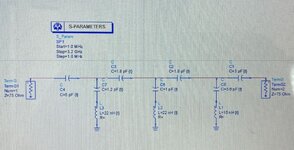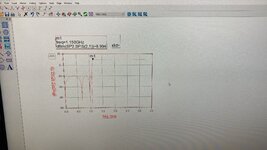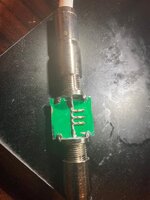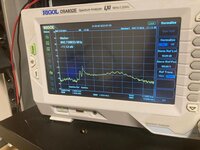new_rf_engineer
Newbie
Hi everyone,
About 1 month ago, I have posted a thread on a similar topic. The topic title is "Basic LC High Pass filter simulation in ADS is not the same with real PCB". The PCB and ADS simulation does not match for cut off frequency. I still manage to do it with valuable comments. Now, I have a little bit different issue.
I have designed an easy high pass circuit which can be seen in "im1.jpeg" below. This simulation is made in ADS. You can see the corresponding s21 graph in "r2.jpeg". This circuit is realized with PCB and you can see the simulation in "r3.jpeg" and "r4.jpeg" respectively.
I am not interested in cut off frequency shift for now. I only consider the graph shape which is totally different from the simulation. I know I do not use vendor library components. Also, there is no line in PCB. All components are soldered cascadedly.
The question is : Why do I get different graphs ? Is it because of the input and output impedances ? What can I do to get similar shape of graph with the simulation in PCB ?
Thanks in Advance
About 1 month ago, I have posted a thread on a similar topic. The topic title is "Basic LC High Pass filter simulation in ADS is not the same with real PCB". The PCB and ADS simulation does not match for cut off frequency. I still manage to do it with valuable comments. Now, I have a little bit different issue.
I have designed an easy high pass circuit which can be seen in "im1.jpeg" below. This simulation is made in ADS. You can see the corresponding s21 graph in "r2.jpeg". This circuit is realized with PCB and you can see the simulation in "r3.jpeg" and "r4.jpeg" respectively.
I am not interested in cut off frequency shift for now. I only consider the graph shape which is totally different from the simulation. I know I do not use vendor library components. Also, there is no line in PCB. All components are soldered cascadedly.
The question is : Why do I get different graphs ? Is it because of the input and output impedances ? What can I do to get similar shape of graph with the simulation in PCB ?
Thanks in Advance



